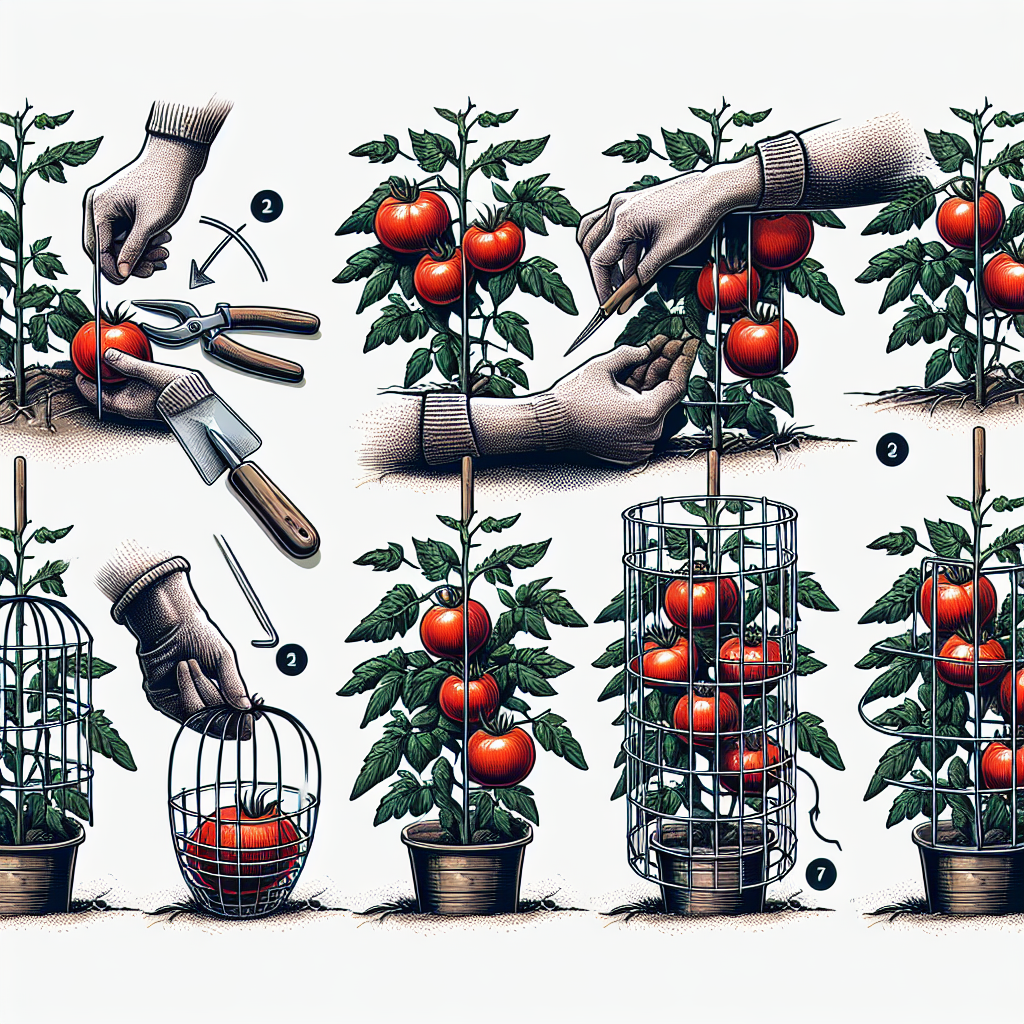
How to put cage on tomato plant
How to Support Your Tomato Plants: The Importance of Caging
Growing tomatoes is a rewarding endeavor for both seasoned gardeners and beginners alike. However, one challenge many face is how to provide the necessary support for these vining plants. Using a cage is one of the most effective methods to keep your tomato plants healthy and thriving. In this article, we will delve into the steps involved in caging your tomato plants, the types of cages available, and additional tips for successful tomato cultivation.
The Importance of Caging Tomato Plants
Tomato plants can grow quite tall and heavy as they bear fruit. Without proper support, they may become unruly, leading to a host of problems such as:
- Broken stems
- Fruits that rot on the ground
- Pest infestations due to dense foliage
- Decreased air circulation
- Difficulties in harvesting
Caging provides several benefits that contribute to the overall health and productivity of your tomato plants:
- Improved air circulation
- Better exposure to sunlight
- Reduced risk of disease
- Ease of harvesting
Choosing the Right Cage for Your Tomato Plants
Before learning how to put a cage on a tomato plant, it is essential to select a suitable cage. Various types of cages can be found at garden centers or made at home. When choosing a cage, consider the following:
- Material: Cages can be made from metal, plastic, or wood. Metal cages are sturdier and can hold heavier plants, while plastic may bend or break under the weight.
- Size: Ensure the cage is tall enough for your variety of tomatoes. Indeterminate varieties need taller cages (at least 5-6 feet), while determinate types can work well in shorter cages.
- Design: Look for cages with a wide base for stability and sufficient openings for easy access to the plant.
Types of Tomato Cages
Here are some commonly used types of tomato cages:
- Wire Cages: Often made of sturdy fencing wire, these provide excellent support and allow for good air circulation.
- Homemade Cages: Constructed from simple materials like bamboo stakes, tomato ties, or repurposed items, these can be tailored to your specific needs.
- Wooden Cages: Using wooden pallets or lumber, these cages can be designed to fit your garden’s aesthetic while still being effective.
Steps on How to Put Cage on Tomato Plant
Now that you have selected the perfect cage, let’s explore the precise steps on how to put a cage on a tomato plant. Timing and technique are key to ensuring your plants benefit from the support you're providing.
1. Timing is Key
The best time to install a cage is when the tomato plant is still young, ideally when it stands about 6 to 8 inches tall. This allows the plant to grow into the cage, minimizing any potential damage to the roots.
2. Prepare Your Tomato Plant
Gently handle the tomato plant to ensure it can stand upright. If it has been topsy-turvy, stake it temporarily with a soft tie or string while you affix the cage.
3. Position the Cage
Carefully place the cage over the plant. Ensure it is centered adequately and that the base of the cage is positioned into the soil, providing a stable anchor.
4. Secure the Cage
Once in position, gently press the lower portions of the cage into the ground to secure it. Depending on the weight of your tomato plant or the material of the cage, you may need to push quite firmly. The base should sink at least 6-12 inches into the soil to ensure it remains upright as the plant grows.
5. Guide the Plant
As the plant grows, it may be necessary to gently guide its branches through the openings of the cage. This encourages vertical growth as opposed to sprawling along the ground. Use soft ties or garden twine to help secure the branches, ensuring they don’t break under their weight.
6. Monitor Throughout the Season
Throughout the growing season, monitor the cage and plant. Adjust as necessary, especially after heavy rains or winds. Ensure that the plant is adequately supported within the cage, and adjust any ties if they seem too tight or too loose.
Additional Tips for Success
Caging is just one part of nurturing your tomato plants. Here are some additional tips to optimize growth and yield:
- Watering: Regular and consistent watering is crucial. Aim for deep watering, ensuring the root zone has access to moisture without becoming waterlogged.
- Fertilization: Use a balanced fertilizer during the growing season for tomatoes. Follow the recommended application rates to prevent over-fertilization.
- Mulching: Apply mulch around the base of the plant to control weeds, conserve moisture, and regulate soil temperature.
- Pest and Disease Management: Vigilantly monitor for common pests (like aphids and hornworms) and diseases (like blight). Utilize organic methods whenever possible and be proactive in addressing issues.
Conclusion
In conclusion, knowing how to put a cage on a tomato plant is crucial for any gardener looking to cultivate a healthy and bountiful tomato crop. By providing appropriate support, you will not only protect the plants from damage but also enhance their growth potential. With the right materials, a little timing, and consistent care throughout the growing season, you can enjoy the fruits of your labor all summer long. Happy gardening!
```By Guest, Published on September 23rd, 2024